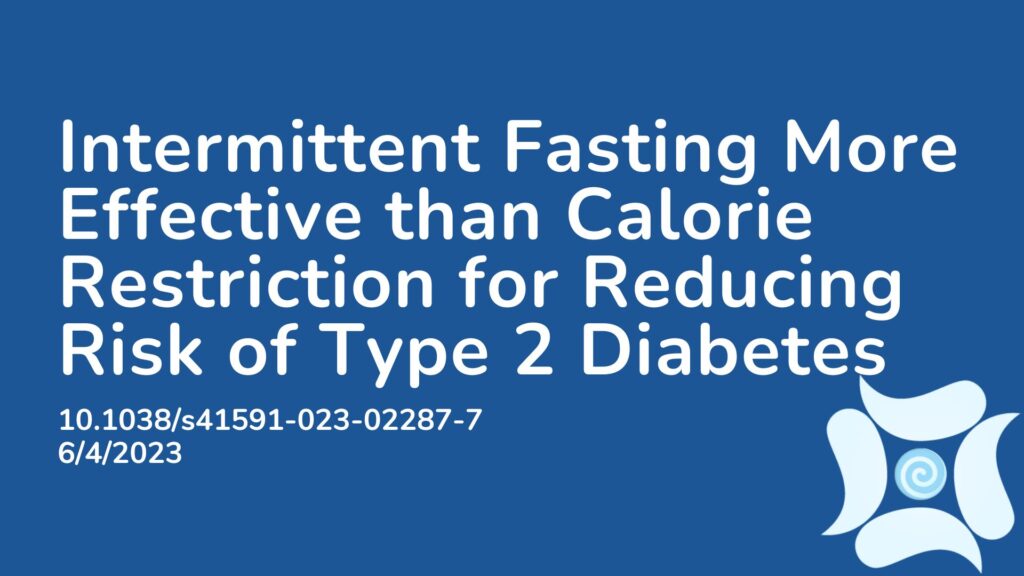Summary:
Researchers from Australia have compared a diet utilising intermittent fasting with a reduced calorie diet to see which is more effective for people likely to develop type 2 diabetes. In Australia, almost 1.3 million people are currently living with type 2 diabetes and this number is expected to rise. There is also currently no cure for type 2 diabetes. The participants in the intermittent fasting group of this randomized controlled trial only ate between 8am and 12pm on three days a week and showed a greater tolerance to glucose, more sensitivity to insulin and a greater reduction in blood lipids compared to the participants on a lower calorie diet. Therefore, the authors concluded a fasting diet is preferencial for reducing risk of type 2 diabetes, however more research is needed to investigate whether the same benefits can be achieved with a longer and less restrictive eating window, which would make the diet more achievable long term.
Abstract:
Intermittent fasting appears an equivalent alternative to calorie restriction (CR) to improve health in humans. However, few trials have considered applying meal timing during the ‘fasting’ day, which may be a limitation. We developed a novel intermittent fasting plus early time-restricted eating (iTRE) approach. Adults (N = 209, 58 ± 10 years, 34.8 ± 4.7 kg m−2) at increased risk of developing type 2 diabetes were randomized to one of three groups (2:2:1): iTRE (30% energy requirements between 0800 and 1200 hours and followed by a 20-h fasting period on three nonconsecutive days per week, and ad libitum eating on other days); CR (70% of energy requirements daily, without time prescription); or standard care (weight loss booklet). This open-label, parallel group, three-arm randomized controlled trial provided nutritional support to participants in the iTRE and CR arms for 6 months, with an additional 12-month follow-up. The primary outcome was change in glucose area under the curve in response to a mixed-meal tolerance test at month 6 in iTRE versus CR. Glucose tolerance was improved to a greater extent in iTRE compared with CR (−10.10 (95% confidence interval −14.08, −6.11) versus −3.57 (95% confidence interval −7.72, 0.57) mg dl−1 min−1; P = 0.03) at month 6, but these differences were lost at month 18. Adverse events were transient and generally mild. Reports of fatigue were higher in iTRE versus CR and standard care, whereas reports of constipation and headache were higher in iTRE and CR versus standard care. In conclusion, incorporating advice for meal timing with prolonged fasting led to greater improvements in postprandial glucose metabolism in adults at increased risk of developing type 2 diabetes. ClinicalTrials.gov identifier NCT03689608.
Article Publication Date: 6/4/2023
DOI: 10.1038/s41591-023-02287-7




